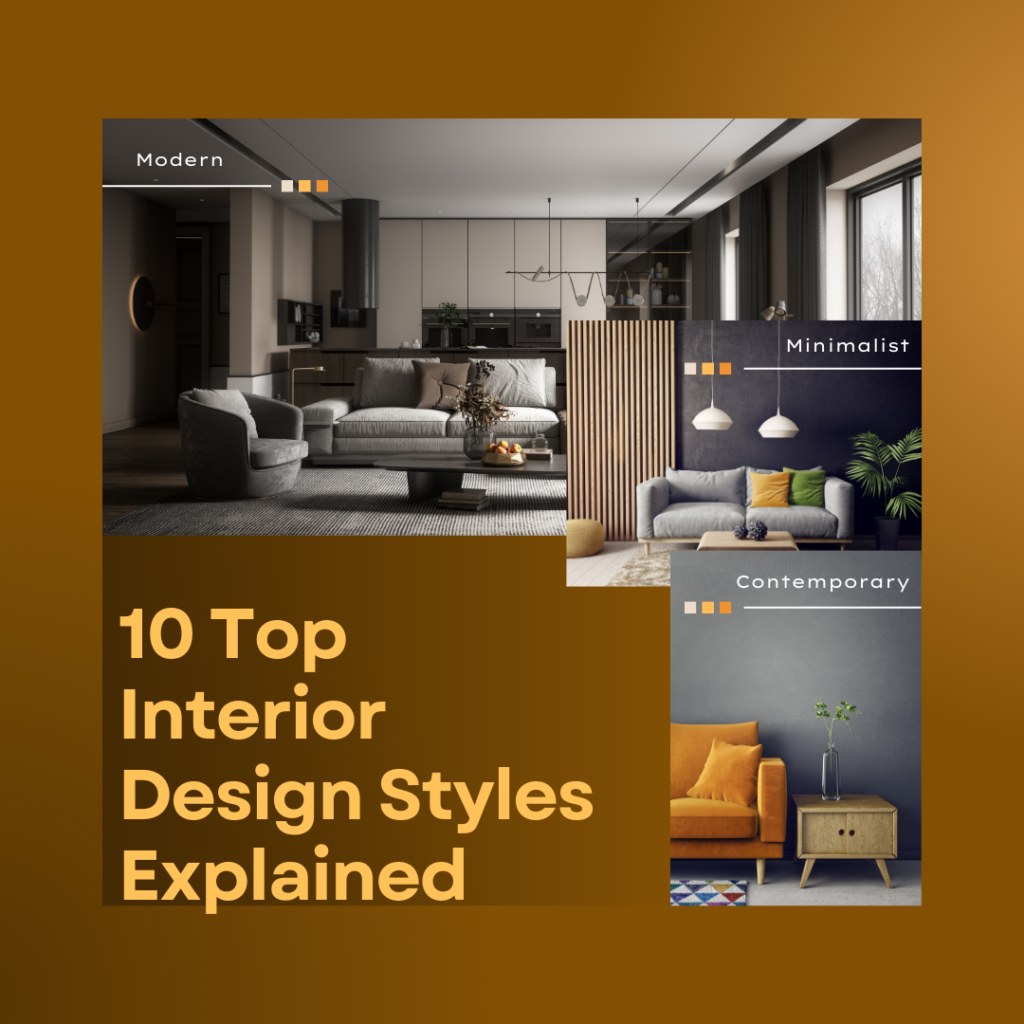Interior Design
10 Top Interior Design Styles Explained
Interior design styles can be overwhelming to navigate, especially if you’re not familiar with them. With so many options available, it can be challenging to choose which style is best for your home. In this post, we’ll explore ten popular interior design styles and explain their key characteristics, making it easier for you to choose the perfect one for your space.
Scandinavian: The Scandinavian style is characterized by simplicity, minimalism, and functionality. This style incorporates light colors, natural materials, and clean lines, creating a calming and serene atmosphere.
Contemporary: The contemporary style is defined by its clean lines, bold colors, and sharp angles. It often features a mix of materials such as metal, glass, and wood, and includes sleek and minimalistic furniture.
Bohemian: The Bohemian style is a laid-back and eclectic style that combines various textures, patterns, and colors. This style is perfect for those who love a relaxed and comfortable atmosphere.
Industrial: The industrial style incorporates raw and rough materials such as concrete, metal, and exposed brick. It is characterized by its minimalistic and utilitarian approach, with functional pieces and simple lines.
Traditional: The traditional style is timeless and classic, with a focus on elegance and symmetry. This style includes formal and ornate furniture pieces, rich colors, and patterns such as floral and damask.
Rustic: The rustic style features natural materials such as wood, stone, and leather, and is often associated with a cabin-like atmosphere. It includes a mix of textures and patterns, creating a cozy and warm ambiance.
Mid-century modern: The mid-century modern style is characterized by its clean lines, geometric shapes, and bold colors. It incorporates a mix of materials such as metal, wood, and plastic, and often features furniture pieces with a futuristic look.
Art Deco: The Art Deco style is bold and glamorous, featuring rich colors, geometric patterns, and luxurious materials such as velvet and brass. This style was popular in the 1920s and 1930s and is often associated with the Great Gatsby era.
Transitional: The transitional style blends traditional and contemporary styles, creating a balanced and harmonious atmosphere. It incorporates neutral colors, simple lines, and comfortable furniture pieces.
Coastal: The coastal style is inspired by the beach and ocean, featuring light and breezy colors such as white, blue, and sand. It incorporates natural materials such as wood and seagrass, creating a calm and relaxed atmosphere.
In conclusion, choosing an interior design style can be challenging, but understanding the key characteristics of each style can make the process easier. Whether you prefer a minimalist Scandinavian style or a bold Art Deco style, there is a design style out there that will perfectly suit your taste and personality.

